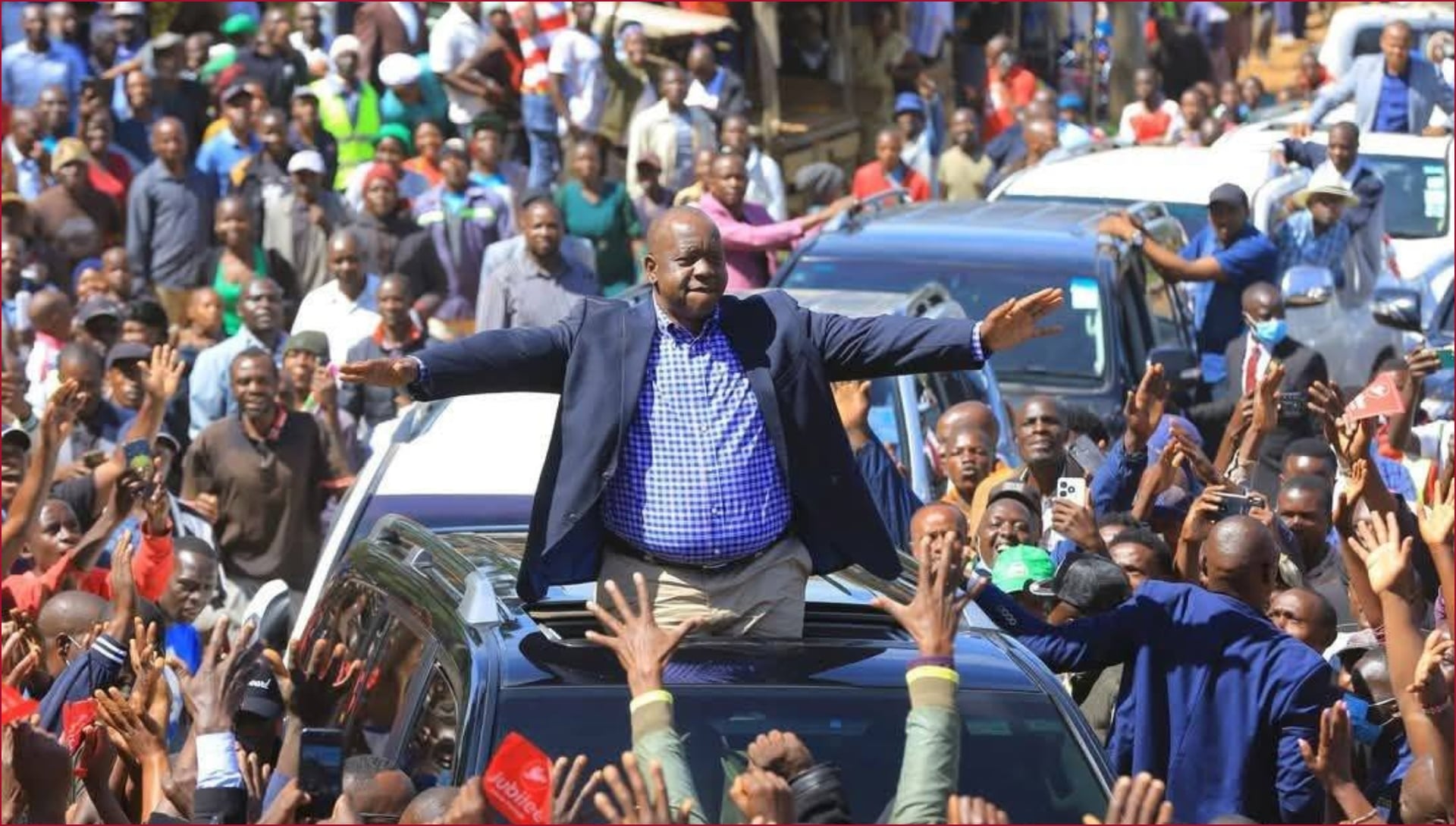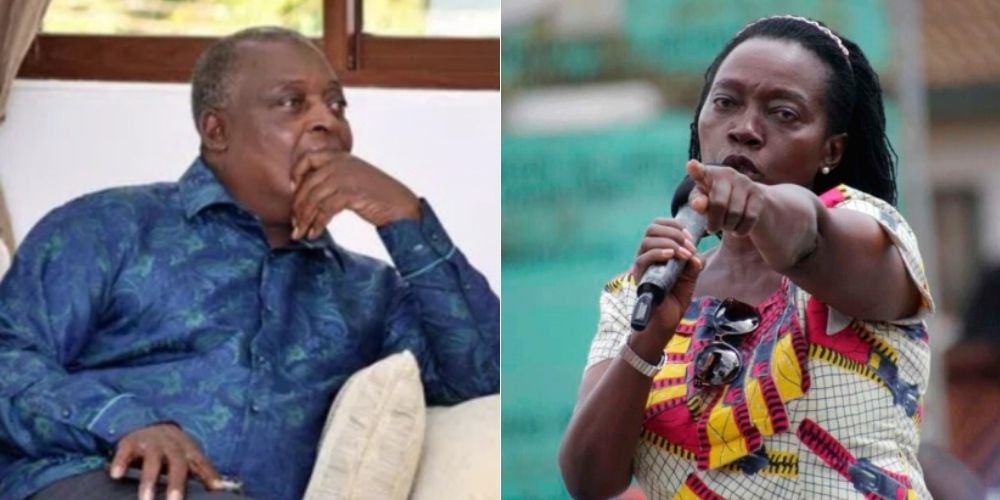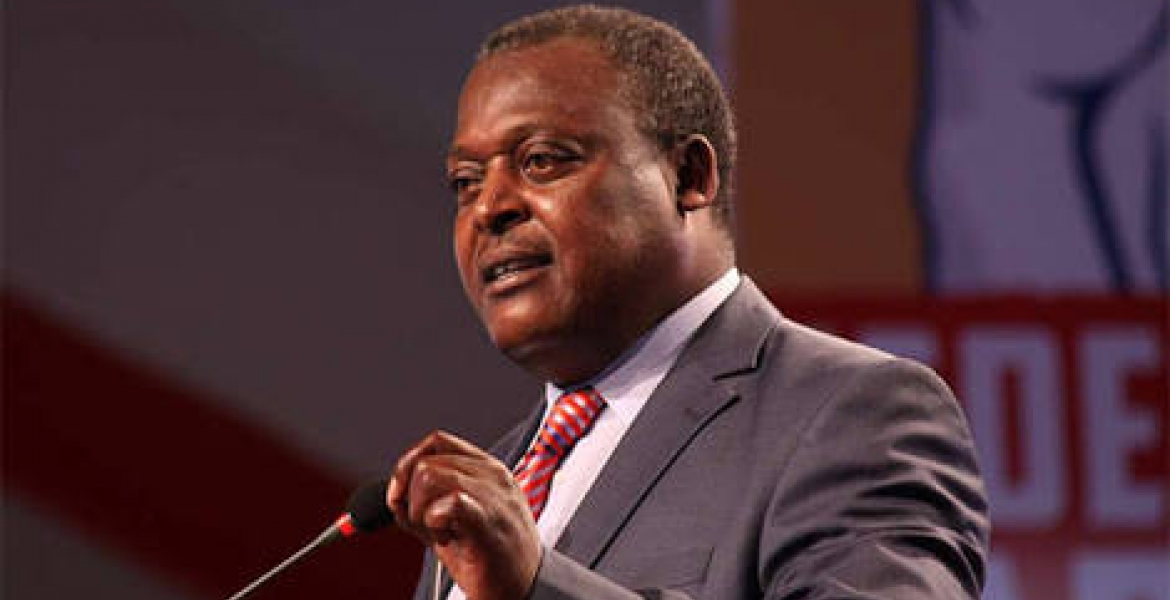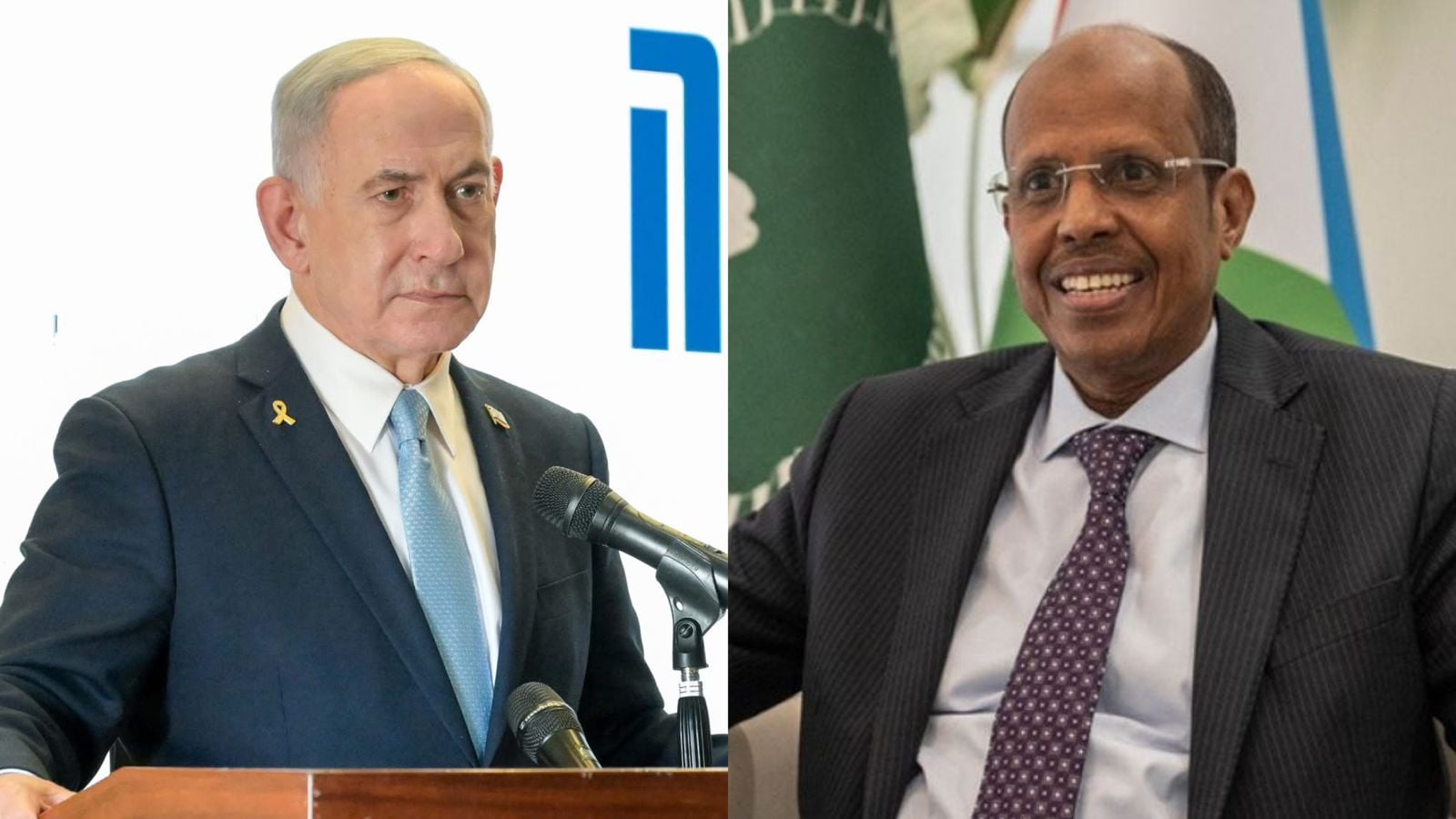Here is President William Ruto's full speech at Mashujaa Day celebrations in Kericho County.
1. Mashujaa Day is a celebration of the power of individuals who changed the course of history and the destiny of our nation. It is a reminder that nations are driven forward and changed by individuals, ordinary men and women who believe they can make a difference, who believe they can change the status quo.
2. The status quo in 1963 was a colonial state, the denial of basic freedoms and dignity. Deep inside, many individuals believed change was necessary and they took action. Individual belief resulted in action and ultimately progress.
3. Today, the status quo is a hunger for socioeconomic transformation, one that most of us feel is long overdue, and rightly so. The need for heroism is as urgent as it was in pre-independence Kenya. The power of individual action is still as powerful today.
4. Our heroes today are on the farms, the markets, the factories, and the offices. Our heroes are using their creativity to create content and shape culture; they are playing on fields and working across various fields.
Read More
5. Every day when we do our best, when we deploy our diligence, intellect, passion, creativity, hard work, and sense of purpose; every day that we believe we can make a difference - we are changing this country.
6. This is our call to Ushujaa, to the best of us every day, to move this country forward.
7. This is why we are focused on empowering Kenyans to be at their best in diverse fields, by democratising and innovating government services to ensure that we give as many Kenyans as possible the opportunity to be their best so that they can move us forward.
8. The Constitution guarantees Kenyans the right to the highest standards of health. Since independence, successive governments have made efforts to guarantee access to quality and affordable healthcare for Kenyans, but with limited success.
9. There have been several efforts to achieve Universal Health Coverage in 2003, 2013 and 2018. However, these efforts were not entirely successful.
10. It is for this reason that the government identified healthcare delivery as one of the core pillars of the Bottom-Up Economic Transformation Agenda. In the Kenya Kwanza Manifesto, we made several commitments towards the delivery of Universal Health Coverage. These include the provision of fully publicly financed primary healthcare, the installation of a digital health management information system and the setting up of a fund for improving health facilities.x

11. Other commitments were the setting up of an emergency medical treatment fund, the establishment of a national insurance fund that covers all Kenyans, and the availability of medical staff who would deliver Universal Health Coverage.
12. The government has instituted a paradigm shift to preventive and promotive health rather than curative. This approach also makes economic sense. Community health reports state that for every KSh1 invested in community health, KSh9.40 are realised in economic and social gains.
13. In our Plan, the delivery of primary healthcare services at the community level will start with Community Health Promoters (CHP).
14. The work of the promoters will include basic preventive and promotive health, health education, basic first aid for the treatment of minor injuries and ailments at the household level and referral for facility-based healthcare.
15. Each community health promoter is allocated 100 homes within their neighbourhoods countrywide.
16. Considering the pivotal role played by community health in the attainment of UHC, the long-term financial sustainability of community health is contingent on enhanced domestic resources for health.
17. The National Government is working closely with the county governments to strengthen the delivery of community health services through payment of stipends for 100,000 Community Health Promoters, on a matching basis of 50:50. The national government has allocated KSh3 billion annually for payment of the stipends. It is worth noting that, as of today, over one million households in 10 counties have been visited by community health promoters, offered services and their data captured in the AFYA NYUMBANI dashboard. This is a major achievement.
18. We also agreed to provide 100,000 Community Health Promoter with kits – which contain basic equipment for household health screening, medicines and supplies used for service provision at the household level.
19. Quality community health data is essential for the planning, resource allocation and monitoring of progress towards Universal Health Coverage. The Government is committed to delivering on the digital health agenda starting from the community level. The electronic community health information systems (e-CHIS), which is live and being used by promoters across the country, is a simple and user-friendly mobile health application that will be used to collect real-time accurate household data, initiate planning for health service delivery and provide linkage to health facilities. Along with the CHP kits, the Government has provided 110,000 smartphones for use by the promoters and Community Health Assistants.

20. The shift from curative to preventive healthcare will further be strengthened by the promotive services provided by community health promoters at the household units, and the integration of preventive services at the primary health care levels.
21. These services will include screening for hypertension, diabetes and eye conditions; offering the necessary health education on water and sanitation, nutrition and providing community rehabilitation services, among others. These services will be provided through multidisciplinary teams that will be established at the level of the Primary Care networks.
22. To strengthen the legal basis for health financing, health service provision and achievement of UHC, four new health laws have been enacted. These are:
• Social Health Insurance Act, 2023
• Primary Health Care Act, 2023
• Facility Improvement Financing Act, 2023 and
• Digital Health Act, 2023
23. Health insurance coverage in Kenya is generally low at 26 per cent, with those at the bottom of the economic pyramid having the least coverage of less than 5 per cent. Many Kenyans incur catastrophic expenditures from out-of-pocket healthcare payments, while many more do not seek care when they fall ill, because they simply cannot afford it. Over the last decade, several measures have been put in place to enhance the capacity of the National Hospital Insurance Fund to effectively deliver on its mandate.
24. While these reform initiatives have yielded significant progress, several gaps remain. Recent analysis shows that, among others, the NHIF operates as a passive, rather than a strategic purchaser, is plagued by inefficiency and governance challenges, and is potentially financially unsustainable.
25. It is against this backdrop that the government proposes a paradigm shift in the provision of social health insurance, in the new Social Health Insurance Act, 2023, which provides for the formation of a Social Health Authority which will repeal the current National Health Insurance Fund Act, 1998.
26. In our Plan, I promised a fully, publicly financed primary health care system, an emergency care fund and a health Insurance fund that will cover all Kenyans. This promise is delivered through the enactment of the new Social Health Insurance Act which, among other things, establishes the publicly financed Primary Health Fund, a fully publicly financed chronic, emergency and critical illness fund and the Social Health Insurance Fund. Access to healthcare will no longer be based on the ability to pay; It will be based on the health needs of every Kenyan.
27. We are implementing a per-household payment system, where a flat rate applies to everyone, regardless of their income.
28. Consider this for example, previously, an individual earning Ksh 10,000 had to part with Ksh 500 to NHIF, a hefty 5% of their earnings. On the other hand, those with salaries of Ksh 100,000 or more contributed Ksh 1,700, a mere 1.7% of their income. Astonishingly, even someone with a monthly income of Ksh 1 million, say, the President, paid the same amount - Ksh 1700, which translates to a paltry 0.17% of their substantial earnings. This bizarre setup meant that low-income earners were effectively subsidizing high-income earners.
29. The Social Health Insurance Fund also signifies a shift to increased use of domestic resources for health financing and a sustainable approach, especially at a time when resources from donors and development partners are dwindling.
30. The healthcare system in Kenya is largely focused on curative services at the expense of preventive and promotive services. This has occasioned inequity in financing, which has disadvantaged primary healthcare uptake and promotion.
31. The Government’s mission is to build a progressive, responsive and sustainable healthcare system for accelerated attainment of the highest standard of health for all Kenyans.
32. The funds allocated to public health facilities have substantially reduced over the years, as they are directed to the County Revenue Fund and are rarely re-invested into the facilities. The lack of autonomy in public health facility management and financial control has led to increasing fragmentation, poor service delivery, deteriorating health outcomes, reduced efficiency, access, equity, financial risk protection, transparency, and accountability.
33. The Facility Improvement Financing Act aims to structure the process and guide the counties on how to provide for retention, management and use of revenue, derived from health-related services rendered at public health facilities.

34. The Act seeks to ensure a unified approach for health facility financial and management autonomy where public health facilities can retain their funds and have autonomy to operate their facilities based on their priorities. This will improve the availability of resources at the facility to provide adequate and equitable quality health services, increase efficiency and thus improve health outcomes for patients.
35. Kenya has made significant strides towards digital transformation, with many sectors leveraging technology to enhance the implementation of digital products and services. The health sector has made steady progress in digital technology transformation through the implementation of digital solutions to manage, share and use health data. However, the adoption of technology has been uncoordinated and characterised by fragmented implementation, with health sector actors not adhering to basic digital health standards, guidelines, recommendations and digital development principles. These technologies have affected how health data is managed, resulting in multiple systems that have limited ability to exchange data.
36. The Kenya Kwanza Manifesto identifies digitisation as a pillar for the health sector to achieve Universal Health Coverage. Accordingly, the Digital Health Act provides the legal basis for the development of a comprehensive and integrated health information system. These systems will enable end-to-end visibility of health processes and seamless sharing and portability of information that will enhance health service delivery and improve the efficient use of resources.
37. The enactment and implementation of the Act and the digitisation agenda will deliver on the promise to ‘integrate ICT to enhance telemedicine and health management information systems'.
38. Apart from the four laws, the Ministry of Health has put in place various policies and strategies to actualise strengthening of local manufacturing of health products and technologies, to have at least 50 per cent of medicines on the Kenya Essential Medical List produced locally, ensuring procurement mechanisms guarantee value for money and provide the advantage of economies of scale.
39. Our mission is clear: To build a healthcare sector that is a shining example to the world, with healthcare workers in the right numbers, who are motivated, well-supported and inspired to deliver their best. Together, we will ensure that every Kenyan has access to quality healthcare services when they need it, regardless of their background or circumstances.
40. I acknowledge the Ministry of Health, Safaricom, the World Health Organisation, UNICEF, the UN Programme on HIV/Aids and United Nations Population Fund, the Danish International Development Agency, the United States Government, the World Bank, Children Investment Fund Foundation, Academic Model Providing Access to Health Care, Medic Mobile, US President’s Emergency for AIDS Relief, and AMREF Kenya, among others, for their support.
41. Kenyans have deliberately rejected ideas and programmes that limit our productivity, waste our resources and delay our take-off.
42. This is why our focus on effectively lowering the cost of living is based on increasing agricultural productivity and expanding land and other resources for production. We have rolled out an agricultural support programme that has provided farmers with access to fertiliser, affordable credit and extension services.
43. By the end of July, we had distributed 3.5 million bags of region-specific crop fertilisers in 41 counties to registered farmers, working with county governments for last-mile delivery. For the first time in Kenya, fertiliser was distributed based on acreage, and the crops that farmers produce, via a digital e-voucher platform.
44. The results of this program are evident across Kenya. We have placed over 200,000 acres under cultivation, which is more than last year. We are looking forward to a bountiful 44 million bags from the long rain season and 61 million bags overall for both seasons, marking an impressive increase of over 40%.
45. Fertiliser support for the short rain crops is now available at National Cereals and Produce Board depots for the regions that plant this season, including Central Kenya, Eastern and Western parts of the country.
46. I urge all unregistered farmers to use this opportunity to register so that they can benefit from subsidised fertiliser.
47. To reduce our national edible oil import bill of $1 billion (KSh 148 billion), the government is supporting sunflower cultivation by distributing 600 metric tons of seeds to farmers in partnership with counties in the Eastern, Western, and Nyanza regions, during the short rain season.
48. When we came to the office in September last year, only 320 Government services were available online. Today, there are more than 13,000 services and we expect to onboard all services by the end of the year. This has increased efficiency in service delivery, revenue collection and enhanced accountability.
49. The government is currently rolling out the last mile of 100,000km of fibre optic infrastructure throughout the country to improve health facilities, schools, Judiciary offices in far-flung areas, and other public institutions. We are also concurrently setting up 25,000 WiFi hotspots targeting fresh produce markets, bus parks and other public spaces. We are also working with Members of Parliament in the set-up of 1450 ICT Hubs in every ward in the country, and I am happy that the National Assembly has aligned the NGCDF act to actualise this strategic intent. Our goal is to spur e-commerce, the creative arts and the digital economy; the frontier of our Bottom-Up Economic Transformation Agenda.
50. We continue to make significant progress in our education sector. Immediately after assuming office last year, we ended months of uncertainty by resolving that Junior School be domiciled in primary schools.
51. We have reduced the teacher shortage by hiring more teachers. In the last year, the Teachers Service Commission has recruited 56,000 teachers, which is half of the required number. This is the highest recruitment in the history of the commission in one year and the largest such exercise in Kenya's history. In subsequent years, we commit to recruit even more.
52. Further, and in keeping with the government’s policy to equip Kenyan youth with practical skills and competencies, the commission has engaged 46,000 teacher interns.
53. Because of the centrality and value of technical and vocational training in the provision of skills, knowledge and competencies, we are increasing tutors in our TVET colleges by another 2,000.
54. In a transformative shift, we unveiled a new funding model for higher education and technical and vocational training that guarantees needy students free college studies. The funding comprises government scholarships, loans and bursaries. Through this model, we have raised funding per student by 40 per cent.
55. Housing is a revolutionary agenda that will have an extensive impact on the economy. At scale, the Affordable Housing Programme will create jobs for our young people, expand the manufacturing of construction products and materials, and enhance economic activity across many sectors. The construction of 46,792 units is already underway, and another 40,000 units are ready to commence construction.
56. Architects, engineers, quantity surveyors, masons, electricians, plumbers, transporters, steel factory workers, cement factory workers, and hardware merchants, will be engaged in this transformative construction housing enterprise to construct 200,000 housing units annually. The construction of one housing unit creates between 3 and 5 direct jobs and 5 to 8 indirect jobs. More jobs will be created with the formalization of the Jua Kali clusters that will provide products such as doors, windows, and hinges for the program.
57. I stand before the people of Kenya to express my pride and admiration for all Kenyans who have risen to the challenge of the moment, seized opportunities that came up as we delivered on our commitments and implemented the bottom-up economic transformation agenda. This enterprising ethos, the hustling spirit, and the motivation to do your part in moving this country forward are heroic.
58. Therefore, let us all dedicate ourselves to nation-building endeavours, assured that as long as we are implementing the bottom-up economic transformation agenda, your government stands with you, and will walk the road of growth and development with you, until we accomplish our purpose and fulfil our mission.
59. In conclusion, allow me to celebrate Kiprugut Chumo, the first Kenyan to win an Olympic medal, by renaming the Kericho Green Stadium after him.
60. We also celebrate Mzee Samuel Kipsoi Ngetich Chepsetyon, an incredible entrepreneur who exemplifies the bottom-up story. A class 3 dropout, he pulled himself up through sheer determination, to set up the Kipchimchim Group of Companies, whose interests span various industries and employ thousands of Kenyans. Before his untimely death, he was working at the West Valley Sugar Company which began milling operations last week. Fare the well Mzee Samuel Kipsoi Ngetich Chepsetyon.
-1697793145.jpeg)





